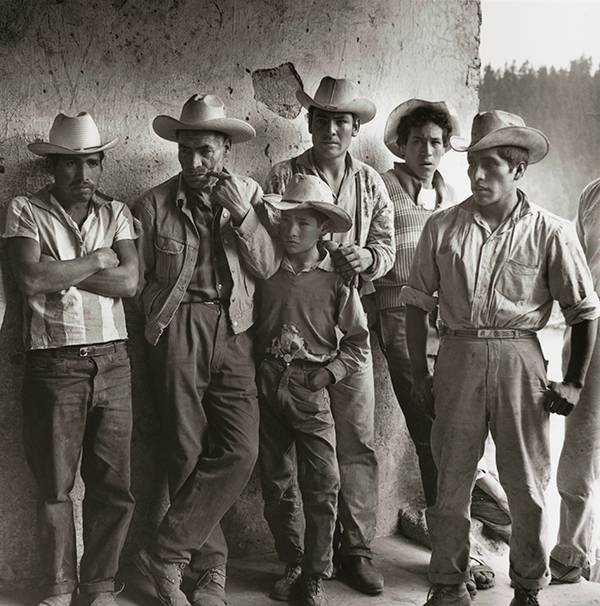


AUGUST 3, 2015 - JULY 3, 2016
RODRIGO MOYA: Photography and Conscience / Fotografía y conciencia
The Wittliff Collections at Texas State University organized this important exhibition—and the bilingual monograph that accompanies it—by drawing from their significant holdings of Rodrigo Moya’s gelatin silver prints. The first retrospective of Moya’s career to be exhibited in the United States, these 90-plus images reveal his vision and precision in an important chapter of the history of twentieth-century Mexican photography.
A prominent Mexican documentary photographer, Moya (b. 1934) began as a photojournalist in 1955. He covered the convulsive period that shook Latin America during the 1950s and ’60s, including the guerrilla movements in Guatemala and Venezuela, the invasion of Santo Domingo, and the Cuban Revolution. Acclaimed for his social photography as well, these images by Moya are also often charged with political ideology. Moya abandoned photography as a profession in 1968 to take advantage of his experience as a journalist, dedicating himself to writing and editorial projects. Alongside this work, however, he continued to photograph, primarily the sea and its people, as well as other subjects such as the countryside, the streets of Mexico, religious processions, and people — those anonymous as well as famous.
This exhibition, and the book that accompanies it, was organized by the Wittliff Collections, drawing from our extensive holdings of this significant photographer’s prints. It is the first retrospective in the United States of his career, and we are proud to reveal Rodrigo Moya’s vision in this important chapter of the history of twentieth-century Mexican photography.
Un destacado fotógrafo documental mexicano, Moya (n. 1934) inició como reportero gráfico en 1955. Cubrió el período convulsivo que sacudió a América Latina durante los años 1950 y 1960, incluyendo los movimientos guerrilleros en Guatemala y Venezuela, la invasión de Santo Domingo y la Revolución Cubana. Tambiénreconocido por su fotografía social, las imágenes de Moya están íntimamente relacionadas con su idealogía política. Moya abandonó la fotografía como profesión en 1968 y valiéndose de su experiencia como periodista, se dedicó a la escritura y trabajo editorial. Sin embargo seguía fotografiando sobre todo el mar y su gente, pero también otros temas como el campo, las calles de México, procesiones religiosas y gente — tanto anónimos como famosos. Esta exposición, y el libro que la acompaña, fue organizada por The Wittliff Collections tomando de nuestros acervos las huellas de este fotógrafo significativo. Se trata de la primera retrospectiva en los Estados Unidos de su carrera, y nos sentimos orgullosos de revelar la visión de Rodrigo Moya en este importante capítulo de la historia de la fotografía mexicana del siglo veinte.
The exhibition RODRIGO MOYA: Photography and Conscience / Fotografía y conciencia was curated by Carla Ellard of the Wittliff Collections, and it is part of FOTOSEPTIEMBRE USA, the annual international photography festival based in San Antonio Texas. ![]()
[above] Asamblea / Assembly, © 1965, Rodrigo Moya
- Facebook
- Twitter
- Instagram
- Youtube
Email List